5 Best Pre-Emergent Herbicides in 2023 - How to Use
Written by Ivy
Dec 14 2022
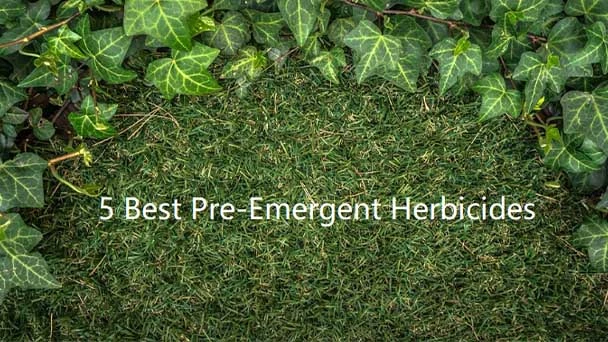
The best pre-emergent herbicides are effective for a long time, kill a variety of weeds, add value by boosting fertilizer, and don't harm grass seeds or seedlings. Make sure you use a high-quality product rather than one that will quickly wash out of your soil and encourage weed growth. One of these potent pre-emergents can prevent weed growth and safeguard your lawn. Pre-emergent herbicides are a chemical option to prevent weeds from sprouting up in the first place and are designed to target particular weed species or their families.
Best Pre-Emergent Herbicides Overview
- Dimension 2EW: Pre-emergent with the longest lifespan.
- Tenacity: Safe pre-emergent to use when sowing grass.
- Snapshot: high-quality lawn fertilizer used as a pre-emergent.
- Surflan AS: garden fertilizer used as a pre-emergent.
- Prodiamine 65 WDG: best at eradicating invasive grasses like poa annua and crabgrass.
What is a Pre-Emergent?
Using herbicides to combat biennial, annual, and perennial weeds is an efficient strategy.
As the name suggests, pre-emergent herbicides are chemical mixtures applied to established lawns to stop the emergence of weeds or, more importantly, the germination of weed seedlings.
Pre-emergent herbicides are the cornerstone of your weed control strategy when used correctly and are very effective at eliminating the most prevalent lawn weeds.
How Do Pre-Emergent Herbicides Work?
Pre-emergents only function once the weed seeds have begun to germinate; they do not stop the weed seeds from sprouting.
As a result, only seeds that have germinated will be killed by pre-emergents after they are applied; the rest will remain in the soil.
A primary root forms when a weed seed germinates, and this root absorbs the pre-emergent that was sprayed on the soil's surface to kill the weed seed.
Pre-emergent herbicides are highly soluble, so it's important to keep in mind that you want the active ingredient to stay at or very close to the soil surface since this is where the majority of weeds tend to stay and germinate.
5 Best Pre-Emergents for Your Lawn
There are some genuine standouts that offer more than the competition in a market flooded with goods that make miraculous promises. Pre-emergents that truly produce distinctive results are listed below. There is a solution for you whether you want your pre-emergent to be as long-lasting as possible, effectively control a specific weed species, or a pre-emergent that won't harm new grass seed.
I frequently use the following products. I'll discuss each's advantages and disadvantages below.
Dimension 2EW
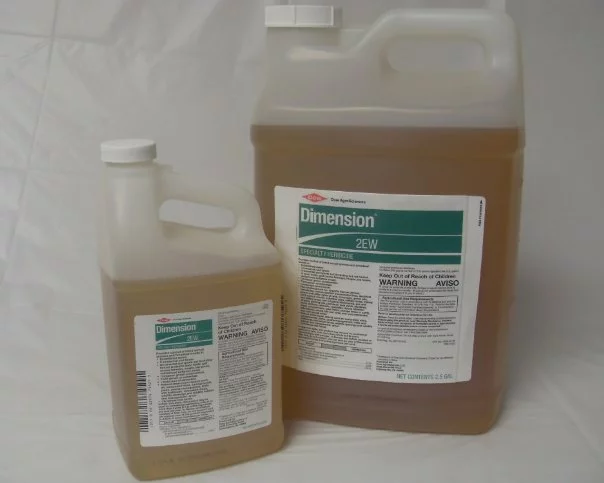
Affiliate links and images pulled from the Amazon Product Advertising API on: 2022-12-13
A powerful method of controlling grasses and broadleaf weeds in your lawn is Dimension 2EW, a liquid selective pre-emergent herbicide. It comes in 1/2 and 2.5 gallon jugs and has a 24 percent concentration of dithiopyr, the active ingredient.
Dimension 2EW works best when applied prior to the emergence of weeds and will not eliminate weeds that have already taken hold, with the exception of crabgrass that is still in the early stages of growth.
How should Dimension 2EW be used?
A handheld sprayer or backpack, as well as safety gear like goggles, gloves, and a mask, are required to use Dimension 2EW.
- Determine the area's square footage (length times width equals square footage).
- Depending on the weed, mix 0.5 to 0.73 per 1,000 square feet with one gallon of water. For exact rates per weed, consult the product label.
- Add the Dimension 2EW, any spray dye, or surfactant after half of the sprayer has been filled with water. A surfactant is added, which lowers the surface tension of the spray droplets, improves spray retention, and expands the area that the liquid can reach.
- Your sprayer's lid should be tightly closed, the container should be gently shaken, the remaining liquid should be added, the container shaken again, and then the area you want to treat for weeds should be sprayed.
It is best to use Dimension 2EW when weeds are visible and starting to sprout, which is typically between February and May in northern states and between January and March in southern states.
Tenacity
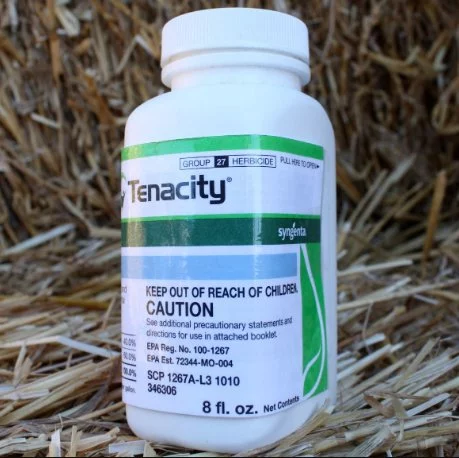
- A systemic pre-emergence and post-emergence herbicide called Tenacity is used to selectively control weeds in turfgrasses through contact and residual control.
- Weeds take up Tenacity while emerging from the soil after being treated with a pre-emergent.
- Target pests: Barnyardgrass, Carpetweed, Chickweed, Clover, Crabgrass (large & smooth), Dandelion, Foxtail, Goosegrass, Henbit, Yellow Nutsedge, Purslane, Thistle, Wild Carrot and other
Tenacity controls weeds in turfgrass through residual action and acts as a systemic pre-emergence and post-emergence herbicide. It is not advised to use on Bermudagrass or St. Augustine grass because it is absorbed by weeds as they emerge from the soil. Augustine lawns.
When used as a pre-emergent, this herbicide, which has 40% of the active ingredient mesotrione, lasts for about 30 days.
Tenacity hinders photosynthesis in plants, which prevents them from growing, and can help control more than 40 different weed species, including southern crabgrass and buttercup.
How should I use the pre-emergent herbicide Tenacity?
Tenacity comes in eight-ounce bottles that are sufficient to treat one to two acres of weeds. Along with the bottle, you also receive a syringe for spot pre-emergent herbicide applications.
- Tenacity can be applied with a surfactant like Southern Ag Surfactant to boost its efficacy. To apply it, mix four to eight ounces of Tenacity with at least thirty gallons of water per acre.
- After two to three weeks, a second application might be required for sufficient weed control.
Snapshot
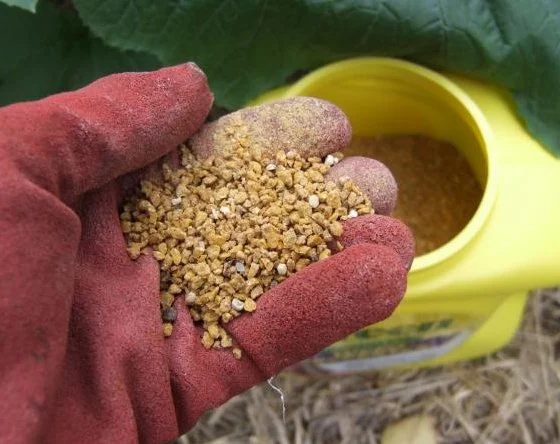
- Snapshot 2.5 boasts more control than any other pre-emergent herbicide on the market
- Up to 6-8 months of control for 111 broadleaf and grassy weeds
- Application rate: 2.3 to 4.6 lb per 1000 square feet
Snapshot is another extremely effective selective pre-emergent that contains the active ingredients isoxaben (0.5%) and trifluralin (2%) and should be applied at a rate of 2.3 to 4.6 lbs per 1,000 square foot.
For roughly six to eight months, it operates nonstop and has the ability to control a variety of weeds, including crabgrass, annual bluegrass, and clover.
Snapshot won't stray outside the application zone because of its strong soil-particle bonds and low water solubility.
How do I use Snapshot?
- At a rate of 2.3 to 4.6 lbs per 1,000 square feet, Snapshot can be applied in the early spring.
- After the initial application, keep an eye on the weed control over time and repeat the process as necessary.
Surflan AS
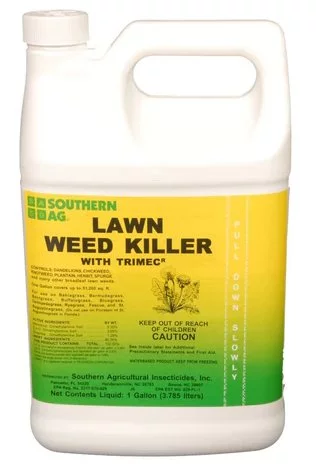
- Oryzalin - 40.40%
- Weed Impede is a pre-emergent treatment for control of annual grasses and certain broadleaf weeds
- For use in Certain established landscape ornamental plants, including trees, shrubs, ground covers/perennials, and flowers, non-bearing fruit and nut trees, non-bearing vineyards, and ornamental bulbs grown in flowerbeds, ornamental plantings and rock gardens
Affiliate links and images pulled from the Amazon Product Advertising API on: 2022-12-13
Large crabgrass, foxtail, annual bluegrass, among many other difficult weeds are all controlled by Surflan AS, a selective pre-emergent herbicide.
It contains 40% of the active ingredient oryzalin and is suitable for use on warm-season turfgrasses like Bermudagrass, Buffalo Grass, Centipede Grass, Zoysia, and even delicate grass varieties like St. Augustine.
For non-bearing trees and vines, landscape ornamentals, and established warm-season turf, 1.5 ounces of Surflan AS per 1000 square feet provides up to four months of protection.
Many lawn owners favor Surflan AS because, when used properly, it can provide weed control for up to eight months.
How does Surflan AS work?
1. Fill a sprayer with to about 3/4th with water, and then mix in 1.5 to 3 ounces of Surflan AS per 1000 square feet.
2. Spray over the trouble spots in your lawn using the fan setting on the sprayer for even coverage.
3. Reapply as needed.
Wearing safety gear while using is always recommended. Until the chemical had dried, keep children and pets away from the treated area.
Prodiamine 65 WDG (Wettable Dispersible Granule)
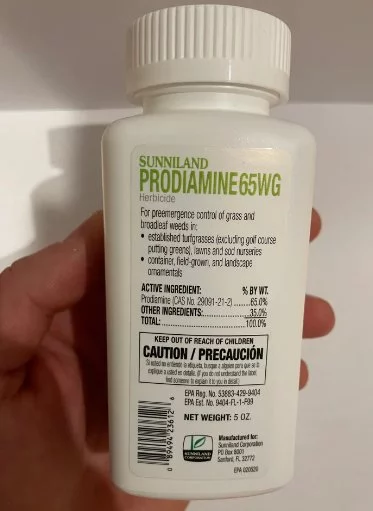
- PRE-EMERGENT HERBICIDE: Quali-Pro's Prodiamine 65 WDG controls pre-emergent grass and broadleaf weeds. Crabgrass can be controlled throughout the season with flexible application options that allow for both spring and fall use. available in a 5 pound bottle.
- FEATURES & BENEFITS: Excellent tank mix partner with fertilizers and iron solutions
- USE SITES: Nurse, Landscape, Turf, Trees, Golf Courses
It's difficult to beat Prodiamine 65 WDG if you're looking for a granular pre-emergent. It comes in a non-dusty granular form, which makes it simple to dissolve when combined with water in a sprayer.
In addition to controlling crabgrass, this adaptable and powerful pre-emergent herbicide also controls spurge, bluegrass, witchgrass, and many other weeds. It can be used both in the spring and the fall.
The common turfgrasses Bermudagrass, Fescue, and St. John's Grass can all be safely treated with Prodiamine 65 WDG. Augustine, and prior to application, it can be combined with fertilizer and iron solutions.
However, it shouldn't be used on newly planted ornamental plants. Prodiamine 65 WDG won't kill any new grass that is actively growing.
It must be used prior to the weeds germinating because, as its name suggests, it contains 65 percent of the active ingredient prodiamine.
How is Prodiamine 65 WDG used?
Prior to using Prodiamine 65 WDG, you must ascertain a few details, such as the size of your yard, the recommended dose for that size area, and the quantity of water needed to evenly cover your lawn.
1. Both a backpack and a handheld pump sprayer can be used to apply Prodiamine 65 WDG.
2. You can use between 0.185 ounces and 0.83 ounces per 1,000 square feet per year once you've calculated the area you'd like to treat.
For instance, 0.72 to 1.66 ounces per gallon of water is the recommended rate to treat crabgrass on a turf surface of 2000 square feet.
3. Water or fluid fertilizer should be poured into your sprayer until it is about a ¼ of the way full. After that, agitate the container a little before adding the appropriate amount of Prodiamine 65 WDG and the remaining water.
4. For even coverage, switch your sprayer's spray nozzle to fan mode before starting to spray over the weed-filled areas of your yard.
DIY Pre-Emergent Herbicide
Many commercially available organic herbicides contain corn gluten meal, but it's also available to purchase online, at farm feed stores, and in garden nursery establishments. Like a granular pre-emergent herbicide, corn gluten meal is applied to the surface. Just scatter it on the lawn at a rate of roughly 20 pounds per 1,000 square feet, then water it in.
You could also use cornmeal, but it won't work as well (the name difference is minor but significant). Cornmeal should also be used in the middle of the summer, when corn gluten meal can be used in the early spring and late fall.
As a natural pre-emergent, a 50 percent saltwater solution is occasionally recommended and, when used frequently, can be effective. However, it has no effect on anything else growing in the soil. This natural pre-emergent is better suited for pathways and driveways because of this. To prevent putting flowers and other desirable plants in danger, it should always be applied sparingly (never too heavily).
What to Consider When Choosing the Best Pre-Emergent Herbicide
Pre-emergent herbicide selection should be done carefully by consumers. Some shouldn't be used on seeded lawns, soil where flowers or vegetables will be planted, or soil where seeds will be sown to start a flower or vegetable garden, for example.
Pre-emergents differ in form, potency, and the kinds of ingredients they contain, among other characteristics. Although we favor natural options, many widely used commercial herbicides are toxic. The use of synthetic products carries risks. Many commercial pre-emergents are labeled "weed preventers," but that doesn't mean they're less damaging than "herbicides" or "weed killers." The safe use and disposal instructions should always be read by consumers from labels.
Form
Both liquid and granular pre-emergent herbicides are commonly used. Although both of these methods stop weeds from sprouting, groundskeepers and gardeners might favor using one over the other. Either type will contribute to lessening the demand for manual weeding.
- Liquid: Liquid pre-emergent herbicides are available as concentrated or full-strength formulations for use in a pump-type sprayer. They are simple to use and ideal for treating lawns to guard against invasive grasses and other weeds. For many industrial uses, including those on golf courses and in parks, concentrated liquids are the preferred format.
- Granules: Granular pre-emergent herbicides, which resemble tiny grains, can be sprinkled, broadcast, or shaken out of a cup directly onto the ground to control weeds. After watering, the granules dissolve and seep into the soil to create a barrier against weed germination.
Selectivity
Pre-emergent herbicides target plants at various growth stages rather than a variety of plant types as do many post-emergent herbicides. The roots of a larger plant won't be harmed by a pre-emergent, but it will prevent a seed from growing shoots or roots. Additionally, pre-emergent herbicides do not destroy the underground roots of perennial weeds like bindweed or witchweed. Gardeners who observe weeds arising following the use of a pre-emergent herbicide may find this to be confusing. Waiting until perennial weeds are visible above ground before treating them with a post-emergent herbicide is the best strategy for getting rid of them.
Ingredients
Pre-emergent herbicides can be broadly categorized as either organic or synthetic.
- Organic: Pre-emergent organic herbicides almost universally contain corn. In addition to being a potent weed-killer for a variety of grassy weeds, corn is also a good source of nutrients for the soil. Alternatives like vinegar exist, but they might smell bad. Although citric acid also functions, it is best for people who grow fruit trees.
- Synthetic: Benefin, Dithiopyr, Isoxaben, Prodiamine, Siduron, and Trifluralin are just a few of the toxic, harmful chemicals that are active components in synthetic pre-emergent herbicides. These goods may take a more general approach or be selective herbicides that target a certain class of weeds.
Many consumers are looking for safer, organic alternatives due to the rising demand for environmentally friendly, more sustainable products. Products in our collection adhere to standards established by OMRI and the National Organic Program of the USDA.
Longevity
Pre-emergent herbicides create a barrier in the soil that prevents the germination of weed seedlings. Pre-emergents typically provide protection for an area for 1 to 3 months, but some can provide protection for a lawn or garden for even longer. To stop blown-in weed seeds from sprouting, many manufacturers advise using pre-emergent herbicide products in the spring, around the time that forsythia blooms are starting to fade, and again in the early fall. Even if used only once a year, pre-emergents will effectively eradicate the majority of weeds, even though they may not all be prevented from germinating.
Safety and Application
The most crucial safety precaution is to apply a pre-emergent when kids and pets aren't around, whether it's synthetic or organic. Here are a few more.
- Read the label. United States vendors of herbicides usually carry a warning label against improper use, which can harm humans, wildlife, and the environment.
- Protect the body. To prevent direct contact, users should use gloves, long sleeves, long pants, a dust mask, and eye protection.
- Apply on a calm day. Herbicide spray can accidentally contaminate a planting area if it is carried by the wind.
- Water after application. Pre-emergents are made to seep into the soil and create a barrier that prevents seed germination when they are watered.
- Wash afterward. Following application, users should thoroughly wash and change their clothes.
- Never flush synthetic herbicides down the toilet or sink. Toxin contamination of the water supply could result from this. In particular for concentrates, the regional waste authority can provide disposal advice.
Conclusion
Your situation and your needs will determine which pre-emergent is best for you. The products listed above are the best in class in each category, depending on the specific weed seeds you want to target or if you need a pre-emergent that is safe for grass seed. These pre-emergents will offer the most weed prevention power for your money.
FAQs
Will Pre-emergent Herbicide Kill Crabgrass?
No, a pre-emergent herbicide won't eradicate crabgrass that is already well-established, but it will prevent new crabgrass seeds from sprouting. We also provide additional guidance in our article on how to remove crabgrass.
When Should I Apply Pre-emergent Herbicide?
Splitting the application of pre-emergents is the best course of action for preventing crabgrass. Early in the spring, before the soil reaches a temperature of 55 degrees, is when Prodiamine or Pendimethalin should first be applied. It should be applied roughly 8 weeks after the first application. This would occur, for instance, in early April and early June in Massachusetts.
How Long Does Crabgrass Preventer Last?
Crabgrass pre-emergent herbicides can last from 2-3 months at low rates to as long as 8-9 months at maximum rates, depending on the product and application rates. After applying these herbicides, it's crucial to immediately water them in with 1/2″ of water.
What is the Best Temperature to Apply Pre-emergent Herbicide?
Prevent weed seeds from germinating by applying a pre-emergent herbicide in the spring when the outside temperature is still cool—in the low 50s.
Will Rain Wash Away My Pre-emergent Herbicide?
Rain will actually aid the pre-emergent herbicide's ability to penetrate the soil and create a barrier against weed seeds. The product would probably only be removed by heavy rain.
Can I Apply Fertilizer With a Crabgrass Preventer?
It's true that a lot of pre-emergents also include fertilizer. Many Step 1 fertilizers will have low Potassium levels and high Nitrogen concentrations with a crabgrass preventer. If you apply in the first few weeks of spring, you might want to wait to fertilize until the grass starts to grow actively. An all-in-one like 20-0-10 is a fantastic option for late spring and early summer applications.
Latest Updated
- Benefits of Bugleweed - 7 Science-backed Health Benefits
- Bugleweed Dangers & Side Effects - Is It Poisonous?
- How to Plant Evergreen Trees - What You Should Know
- When to Plant Evergreens - Grow Guide for Evergreen Trees
- 12 Wonderful Evergreen Shrubs for Your Garden
- 12 Popular Evergreen Plants with Pictures for Beginners
- When And How To Prune A Lilac Bush Like a Pro
- How to Grow & Care for Lilac Vine (Hardenbergia Violacea)
- Japanese Lilac Tree (Syringa Reticulata) Care & Propagation Guide
- Shumard Oak Pros and Cons - What to Know
Popular Articles
- Winter maintenance of Antirrhinum Majus
- How to Grow Terminalia Mantaly Tree
- How to Grow and Care for Crossostephium Chinense
- How to grow Antirrhinum Majus in spring
- Peristeria Elata (Dove Orchid) Profile: Info & Care Guide
- Underwatered Snake Plant (Sansevieria Trifasciata) - Signs And How To Fix
- How to Care for Brazilian Jasmine Plant (Mandevilla Sanderi)
- How to Grow & Care for Graptopetalum Purple Delight in Summer
- Rosa Chinensis (China Rose): Plant Growing & Care Tips
- How to Care for Baby Sun Rose (Aptenia Cordifolia)